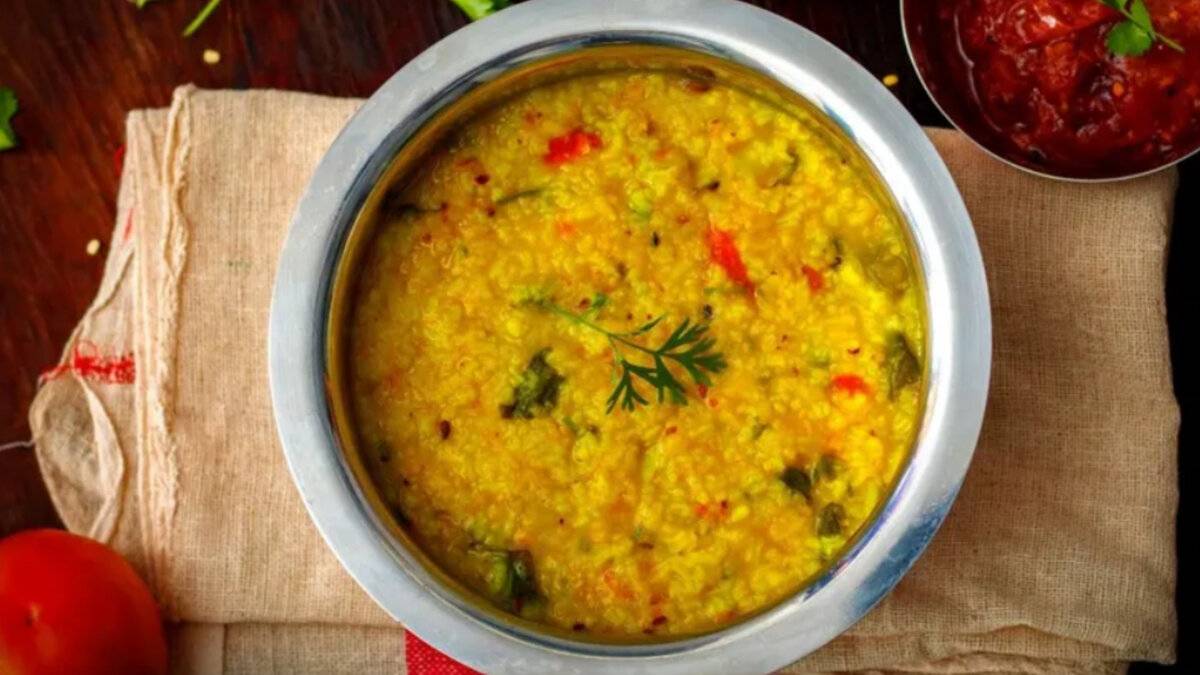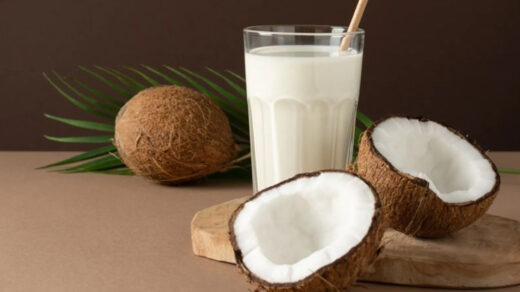What is Khichuri? What Are Its Benefits?
Are you looking for a wholesome and nourishing dish that not only satisfies your taste buds but also provides numerous health benefits? Look no further than khichuri, a traditional Indian dish that has been cherished for centuries. 
In this article, we will delve into the origins, ingredients, preparation methods, health benefits, and variations of Khichdi. So, grab a seat and get ready to explore the wonders of this delightful comfort food.
What is khichuri?
The term “Khichuri” or “Khichdi” originates from the Sanskrit word “Khiccha,” which refers to a dish made with rice and legumes. Typically, Khichdi is prepared using a combination of rice and lentils, although there are regional variations such as Bajra Khichdi and Moong Khichdi.
Khichuri, often referred to as the “ultimate comfort food,” is a one-pot dish made by combining rice and lentils with a variety of spices and vegetables. It is a staple in Indian cuisine and is known for its simplicity, versatility, and nutritious qualities.
khichuri is a balanced meal in itself, providing a good balance of carbohydrates, proteins, and essential nutrients. In Hindu culture, Khichdi holds significance as one of the initial solid foods introduced to babies.
Historical Significance
khichuri has a rich history that dates back thousands of years. It is believed to have originated in ancient India and has been mentioned in Ayurvedic texts as a healing and nourishing dish.
In Indian culture, khichuri is often associated with purity, simplicity, and a sense of well-being. It is commonly prepared during festivals and religious ceremonies and as a part of a balanced diet for people of all ages.
Khichuri Alternative names
Here are the variations of Khichdi, spelled in different parts:
- Khichdi
- Khichadi
- Khichdee
- Khichadi
- Khengchuri (Bengali)
- Khisiri (Assamese)
- Khechidi/Khechudi (Odia)
- Kisuri (Sylheti)
- Khichari
- Kitcheree
- Kitchree
These variations represent the diverse regional names for Khichdi, showcasing its popularity and wide acceptance in different parts of India and beyond.
Traditional Ingredients and Preparation
The basic ingredients of khichuri include rice, lentils (usually split moong dal or toor dal), ghee (clarified butter), and a blend of aromatic spices such as cumin, turmeric, and coriander.
Additional vegetables like peas, carrots, and potatoes can be added to enhance the flavor and nutritional value. The ingredients are cooked together in a pressure cooker or a pot until they form a soft and porridge-like consistency.
khichuri Nutritional Value
khichuri is a nutritional powerhouse as it combines rice and lentils, which are both excellent sources of protein, dietary fiber, vitamins, and minerals. The combination of these ingredients provides a complete range of essential amino acids, making it a valuable source of plant-based protein.
khichuri is not only a flavorful and comforting dish but also a powerhouse of nutrition. It offers a wide range of essential nutrients that contribute to overall health and well-being. Let’s take a closer look at the nutritional value of khichuri:
1. Carbohydrates: khichuri primarily consists of rice and lentils, making it a rich source of complex carbohydrates. Carbohydrates provide energy to the body and are essential for proper brain function.
2. Protein: Lentils used in khichuri are an excellent source of plant-based protein. Protein is crucial for cell repair, growth, and maintenance of tissues, muscles, and organs.
3. Fiber: Both rice and lentils are high in dietary fiber. Fiber aids in digestion promotes bowel regularity, and helps prevent constipation. It also contributes to a feeling of fullness, supporting weight management.
4. Vitamins: khichuri contains various vitamins, including vitamin B-complex, which plays a vital role in metabolism, energy production, and maintaining healthy skin, hair, and nails.
5. Minerals: khichuri is a good source of essential minerals such as iron, magnesium, phosphorus, and potassium. These minerals are necessary for maintaining healthy bones, regulating blood pressure, and supporting overall cellular function.
6. Low-Fat Content: khichuri is a low-fat dish when prepared without excessive oil or ghee. It can be a suitable choice for individuals aiming to reduce their fat intake or maintain a healthy weight.
7. Antioxidants: The spices used in khichuri, such as turmeric, cumin, and coriander, are known for their antioxidant properties. Antioxidants help neutralize harmful free radicals in the body and protect against oxidative stress.
Health Benefits of Khichuri
It’s important to note that the exact nutritional composition of khichuri may vary based on the specific ingredients and proportions used in the recipe. However, overall, khichuri offers a balanced combination of macronutrients and micronutrients, making it a wholesome and nourishing meal choice.
Remember to consult with a healthcare professional or nutritionist for personalized dietary advice and to ensure that khichuri fits into your specific nutritional requirements.
1. Easy Digestion
One of the key advantages of khichuri is its easy digestibility. The gentle cooking process and the combination of rice and lentils make it light on the stomach and suitable for people of all ages, including those with digestive issues or recovering from illnesses.
2. Promotes Detoxification
khichuri is often recommended during detoxification or cleansing periods as it helps in flushing out toxins from the body. The high fiber content aids in digestion regulates bowel movements, and supports the elimination of waste products, promoting a healthy digestive system.
3. Boosts Immunity
The blend of spices used in khichuri, such as turmeric, cumin, and coriander, possesses antimicrobial and anti-inflammatory properties. These spices not only enhance the flavor but also contribute to strengthening the immune system and protecting the body against various infections and diseases.
4. Weight Management
For individuals aiming to maintain or lose weight, khichuri is an excellent choice. Its high fiber content keeps you feeling full for longer, curbing cravings and reducing the chances of overeating. Moreover, the balanced combination of carbohydrates and proteins helps regulate blood sugar levels, making it a suitable option for individuals with diabetes.
5. Supports Gut Health
Khichdi is a gentle and easily digestible dish that supports a healthy digestive system. The combination of rice and lentils provides dietary fiber, which promotes regular bowel movements and helps prevent digestive issues such as constipation. Additionally, the presence of probiotics in fermented variations of Khichdi can contribute to a healthy gut microbiome, supporting overall gut health and improving nutrient absorption.
khichuri Variations from Across India
1. Bisi Bele Bath
Originating from Karnataka, Bisi Bele Bath is a spicy and flavorful version of khichuri. It is prepared using a unique blend of spices, lentils, rice, and vegetables, giving it a distinct taste and aroma.
2. Pongal
Pongal is a popular South Indian dish prepared during the harvest festival of Pongal. It is made with rice, lentils, black pepper, cumin, and cashews, resulting in a delicious and hearty meal.
2. Gujarati khichuri
Gujarati khichuri is a wholesome dish made with a combination of rice, lentils, and a variety of vegetables. It is often served with a dollop of ghee, curd, or pickle for added flavor.
3. Bengali Bhuni Khichuri
Bhuni Khichuri is a Bengali version of khichuri that combines aromatic spices, rice, lentils, and vegetables. It is usually enjoyed with a side of fried fish or eggplant.
These variations showcase the adaptability of Khichdi across different regions and dietary preferences, offering diverse flavors and textures to suit individual tastes.
khichuri: A Global Favorite
While khichuri has its roots in Indian cuisine, it has gained popularity worldwide for its simplicity, nutritional value, and comforting nature. Many international chefs and food enthusiasts have embraced Khichdi, incorporating their own unique twists and variations to suit different palates.
Cooking Tips and Techniques
To prepare a delicious khichuri at home, follow these tips:
- Rinse the rice and lentils thoroughly before cooking to remove any impurities.
- Soak the rice and lentils for at least 30 minutes before cooking to reduce cooking time and improve digestibility.
- Experiment with different vegetables and spices to customize the flavor according to your preferences.
- Use a pressure cooker for faster and more efficient cooking, or cook it in a pot on the stove for a traditional touch.
Serving Suggestions
khichuri can be enjoyed on its own or accompanied by various accompaniments such as yogurt, pickle, papad, or a side of roasted vegetables. It can be served as a comforting meal during cold winter evenings or as a light lunch option.
Frequently Asked Questions (FAQs) on Khichuri
Q1: Is Khichuri suitable for people with gluten intolerance?
Yes, khichuri is gluten-free as it is made with rice and lentils, which are naturally gluten-free. It is a safe and nutritious option for individuals with gluten intolerance or celiac disease.
Q2: Can I make khichuri without using ghee?
Absolutely! Ghee adds richness and flavor to khichuri, but you can replace it with vegetable oil or omit it altogether for a vegan version.
Q3: How can I make Khichuri more flavorful?
You can enhance the flavor of khichuri by adding spices like cinnamon, cardamom, cloves, or bay leaves. Additionally, you can temper the dish with mustard seeds, curry leaves, and asafoetida for an extra burst of taste.
Q4: Can Khichuri be frozen and reheated?
Yes, khichuri can be frozen in portion-sized containers and reheated when needed. It is a convenient option for meal prepping or busy weekdays.
Q5: Is khichuri suitable for babies and toddlers?
khichuri is often recommended as one of the first solid foods for babies due to its easy digestibility and nutritional value. It can be mashed or pureed for younger infants and served as a wholesome meal for toddlers.
References
- Khichdi (dish)(1)
- Development of ready to cook vegetable khichadi mix by microwave drying technology(2)
khichuri is a versatile and nourishing dish that has stood the test of time. It offers a multitude of health benefits, ranging from providing essential nutrients to aiding digestion and boosting immunity. With its simplicity and comforting nature, khichuri has become a favorite among people worldwide.

























